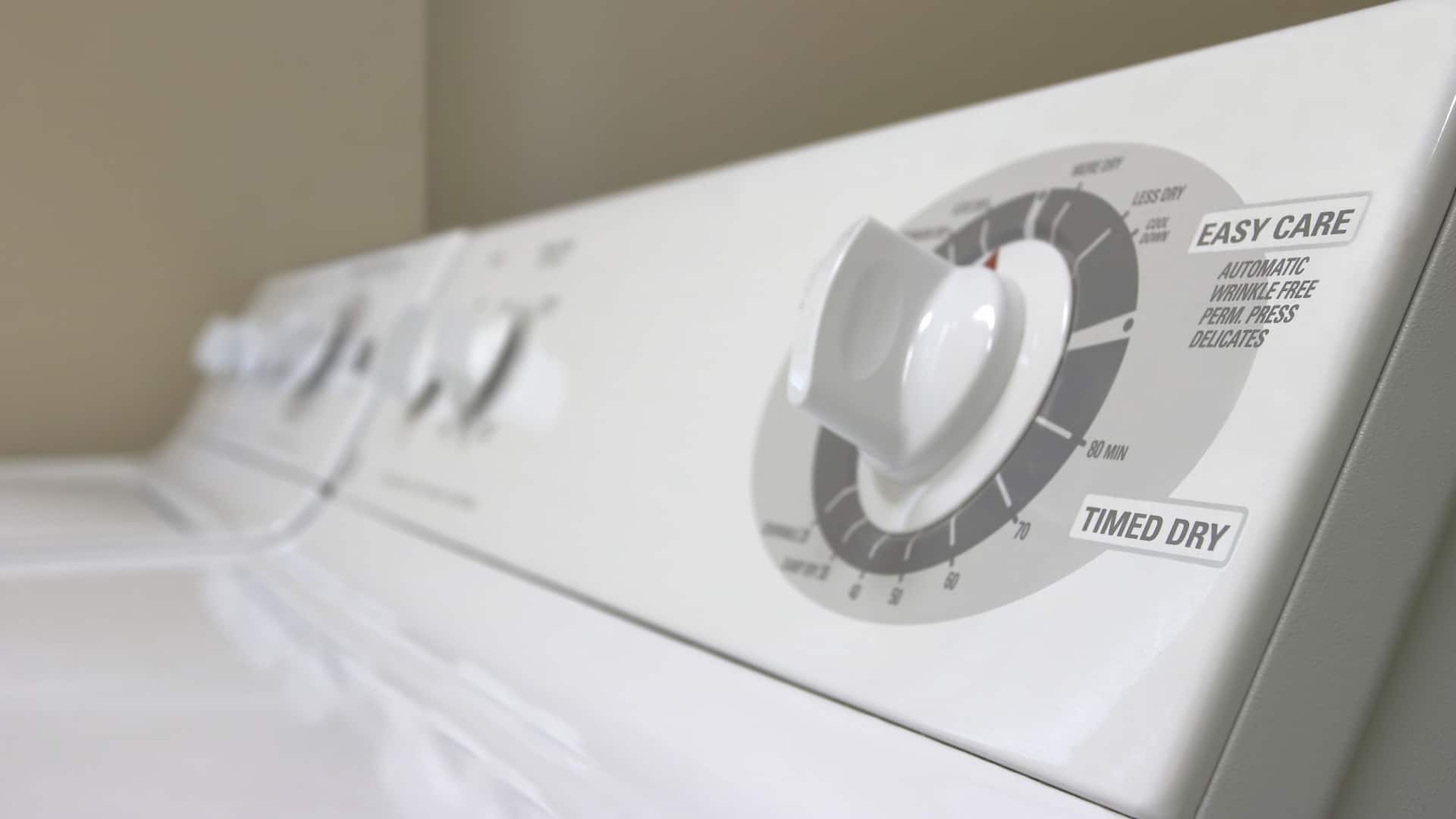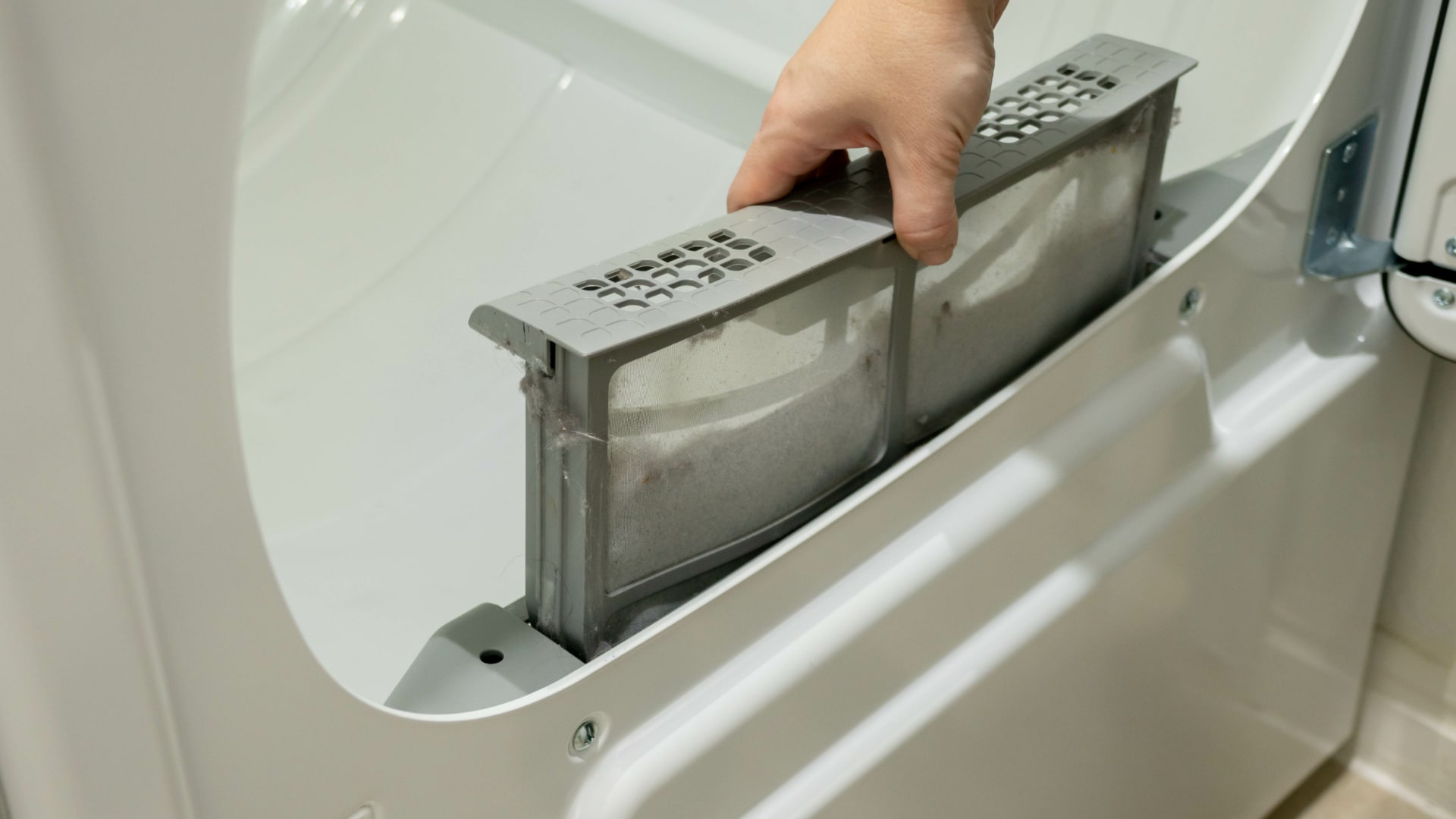Ge Gas Dryer Troubleshooting: Quick Fix Guide
When your trusty GE gas dryer starts acting up, it can feel like a real headache. Imagine this: you’ve loaded your dryer with freshly washed clothes, only to find them still damp and cold after what should have been a quick drying cycle.
Frustrating, right? But don’t worry—you’re not alone, and the solution might be simpler than you think. In this guide, we’re diving deep into GE gas dryer troubleshooting, uncovering the secrets to getting your dryer back in tip-top shape. You’ll discover easy fixes for common problems that often plague these reliable machines.
Whether it’s a dryer that won’t start, one that’s not heating, or strange noises that have you puzzled, you’ll find clear, actionable advice here. Imagine the relief of knowing exactly what to do when your dryer misbehaves. Picture the satisfaction of solving these issues without the need for expensive repairs or replacement. Your dryer woes are about to become a thing of the past. Stick with us, and let’s turn frustration into empowerment. Ready to conquer those dryer dilemmas? Let’s get started!

Credit: academy.fredsappliance.com
Common Issues
GE gas dryers are known for their reliability and efficiency. Yet, like any appliance, they can face issues. Knowing common problems helps in troubleshooting and maintenance. This guide covers frequent issues users encounter. It provides simple solutions to keep your dryer running smoothly.
Dryer Not Starting
A dryer that won’t start is frustrating. First, check the power source. Ensure the dryer is plugged in securely. Next, inspect the circuit breaker. It might be tripped. Reset it if necessary. Sometimes, the start button can be faulty. Press it firmly. If there’s no response, it may need replacement.
No Heat Production
Drying clothes without heat is ineffective. Check the gas supply first. Make sure the valve is open. Inspect the thermostat too. It regulates temperature. A faulty thermostat can cause heat issues. Another potential problem is the igniter. It lights the gas. If broken, it needs a replacement.
Long Drying Times
Extended drying times can be annoying. Clean the lint filter first. A clogged filter restricts airflow. Next, check the vent hose. Ensure it’s not blocked. Blockages can trap moisture inside. Lastly, examine the moisture sensor. A malfunctioning sensor may not detect dampness correctly.
Unusual Noises
Strange sounds are a sign of trouble. Check for loose items inside the drum. They can cause rattling noises. Next, inspect the drive belt. A worn-out belt can make squeaky sounds. Listen for any grinding noises. These might indicate a motor issue. If persistent, professional help is advisable.
Drum Not Spinning
A non-spinning drum halts drying. First, check the drive belt. It might be broken or loose. Replace it if necessary. Sometimes, the drum rollers wear out. This prevents smooth spinning. Inspect them for damage. If faulty, a replacement is needed. Ensure the motor is functioning. If not, consult a technician.
Initial Checks
Start your GE gas dryer troubleshooting by checking the power supply and ensuring the dryer door is securely closed. Confirm that the gas valve is open and the lint filter is clean to avoid common issues.
When your GE gas dryer isn’t working as expected, frustration can quickly set in. Before diving into complex solutions, it’s crucial to perform some initial checks. These checks are simple yet effective steps that can save you time and potentially avoid a costly repair. Let’s explore these initial checks to help you get your dryer back on track.Power Supply
Ensure your dryer is properly connected to a power source. Check if the plug is securely inserted into the outlet. Sometimes, a loose connection can cause the dryer to appear dead. Inspect the circuit breaker or fuse box. A tripped breaker or blown fuse might be the culprit behind a non-functional dryer. Reset the breaker or replace the fuse and see if that resolves the issue. Have you considered using a different outlet? Testing the dryer with another power source can confirm if the problem lies with the outlet itself.Gas Supply
Verify that the gas supply is turned on. The valve should be fully open to allow gas flow to the dryer. If you’ve recently moved or installed the dryer, double-check that the gas line is connected properly. Listen for the sound of gas flowing when the dryer is turned on. The absence of this sound can indicate a supply issue. If you smell gas, turn off the dryer immediately and inspect for leaks or disconnections. Is the gas supply sufficient? Low gas pressure can affect dryer performance. Contact your gas provider if you suspect pressure issues.Control Settings
Review the control settings on your dryer. Sometimes, incorrect settings can prevent the dryer from starting or heating properly. Make sure the timer and cycle options are set correctly. Is the child lock feature activated? This safety feature can inadvertently lock controls and prevent the dryer from starting. Disable it to regain control. Consider resetting the dryer controls. Unplug the dryer for a few minutes and then plug it back in. This simple reset can sometimes resolve minor glitches in the control panel. By focusing on these initial checks, you can often identify and solve problems without the need for professional assistance. Have these steps ever saved you from a repair bill? Share your experiences in the comments below!Error Codes
If you’ve ever been faced with a cryptic error code flashing on your GE gas dryer, you’re not alone. These codes are like secret messages from your dryer, hinting at what might be wrong. Understanding them can save you time and potentially a costly repair bill. Let’s dive into how you can interpret these messages and get your dryer back to its best performance.
Interpreting Error Messages
Error codes might seem like random numbers or letters, but each has a specific meaning. They can point to simple issues like a clogged vent or more complex problems like a faulty sensor.
Consult your dryer’s manual or the GE website for a detailed list of codes. It’s like learning a new language; once you understand it, troubleshooting becomes much easier.
For instance, if you see an “E4” code, it usually indicates a problem with the temperature sensor. Addressing this can prevent further damage.
Resetting The Dryer
Sometimes, all your dryer needs is a reset to clear an error code. It’s similar to rebooting a computer to solve a glitch.
To reset, unplug your dryer and wait for about 30 seconds before plugging it back in. This can refresh the system and clear minor errors.
While this method works for many common issues, if the error persists, it might be time to consider professional help. Are you ready to be a DIY hero, or is expert intervention your next step?
Remember, error codes are like your dryer’s way of communicating with you. Pay attention to them, and you’ll keep your dryer running smoothly for years.

Credit: www.youtube.com
Heating Problems
Experiencing heating issues with your GE gas dryer can be frustrating. Common problems include clogged vents or faulty thermostats. Regular maintenance helps prevent these issues, ensuring efficient performance.
Is your GE gas dryer leaving your clothes damp and cold? You’re not alone. Heating problems in gas dryers can be frustrating, especially when you need those warm clothes ready for the next day. Let’s dig into some common heating issues you might encounter and how to troubleshoot them.Thermostat Issues
Thermostats in dryers regulate the temperature to ensure clothes dry efficiently. A malfunctioning thermostat might cause your dryer to heat inconsistently or not at all. Check if the thermostat is working by using a multimeter to test for continuity. If there’s no continuity, it’s time to replace the thermostat. Always remember to unplug your dryer before performing any checks. Safety first!Igniter Malfunctions
The igniter is crucial for starting the heating process. If your dryer isn’t heating, the igniter might be the culprit. Look for visible signs of damage like cracks or wear. A faulty igniter will not glow, meaning it cannot ignite the gas to produce heat. Replacing an igniter might seem daunting, but with a screwdriver and a new igniter, you can do it in under an hour. Have you ever fixed something and felt that rush of accomplishment? This is one of those moments!Gas Valve Solenoid
The gas valve solenoids control the flow of gas to ignite the flame. If these coils are faulty, your dryer won’t heat properly. Listen for a clicking sound when the dryer is on; if you don’t hear it, the solenoids may need replacing. Swapping out solenoids is straightforward. Remove the front panel of your dryer and locate the coils. With a little patience, you can fix this common issue yourself, saving time and money. Have you faced similar heating issues with your dryer? What did you find was the most challenging part? Share your experiences or questions below. Let’s get those clothes drying properly again!Mechanical Issues
Mechanical problems in GE gas dryers can cause frustration. They often lead to reduced efficiency or complete breakdowns. Understanding these issues helps in maintaining your appliance.
Let’s delve into some common mechanical problems and their solutions. This will help keep your dryer running smoothly.
Belt Problems
The dryer belt plays a crucial role. It transfers motion from the motor to the drum. A broken or loose belt can stop the drum from spinning. Listen for unusual noises or a lack of movement. These are signs of belt issues. Replacing the belt can usually solve the problem.
Motor Malfunctions
The motor is the heart of your dryer. It powers the drum and blower. A faulty motor often causes strange sounds or burning smells. If your dryer won’t start, the motor might be at fault. Testing and replacing the motor may restore functionality.
Roller And Bearing Checks
Rollers and bearings support the drum. They ensure it spins smoothly. Worn-out rollers cause noisy operations or uneven spinning. Regular checks prevent bigger problems. If worn, replacing them will improve dryer performance.
Noise Troubleshooting
Is your GE gas dryer making strange noises? This can be both irritating and concerning. Understanding the source of these sounds can save you time and potentially costly repairs. Let’s dive into some effective noise troubleshooting techniques.
Identifying Source Of Noise
Start by identifying where the noise is coming from. Is it a persistent thumping, a high-pitched squeal, or maybe a rattling sound? Each noise can indicate a different issue. Listen carefully to pinpoint its origin.
Try running the dryer empty to see if the noise persists. This can help you determine if the noise is from the dryer itself or from items inside it. If the noise stops, it might be an issue with the load.
Fixing Loose Parts
Loose parts can be a common source of noise in dryers. Check for any screws or components that might have come undone. A loose drum or worn-out belt can cause banging or thumping sounds.
Tighten any loose screws and ensure all parts are secure. If you’re not comfortable doing this yourself, consider calling a professional. Safety should always be your top priority.
Lubrication Needs
Some noises might indicate a need for lubrication. If you hear a squealing sound, it could mean that the drum rollers or idler pulley need oiling. This can reduce friction and noise.
Use a lubricant that is safe for dryer parts. Avoid over-lubricating, as this can attract dust and debris. Always follow the manufacturer’s instructions for the best results.
Have you ever encountered an unexpected dryer noise that turned out to be a simple fix? Share your experiences in the comments below. Your insights could help others facing the same issue.
Maintenance Tips
Maintaining your GE gas dryer ensures it runs efficiently and lasts longer. Regular attention to key areas can prevent issues and costly repairs. This section provides essential maintenance tips to keep your dryer in top condition.
Regular Cleaning
Regular cleaning helps your dryer function well. Start by removing lint from the lint trap after each load. This prevents lint buildup, which can cause overheating and fire hazards. Also, wipe the drum with a damp cloth monthly to remove residue. Regular cleaning ensures your clothes dry evenly and keeps the dryer fresh.
Ventilation Check
A clear vent is crucial for dryer efficiency. Check the vent system every few months. Look for blockages or lint buildup in the vent hose. A clogged vent can lead to longer drying times and increased energy use. Ensure the vent hose is kink-free and securely attached for optimal airflow.
Preventive Measures
Taking preventive measures can save you time and money. Avoid overloading the dryer, as it strains the motor and increases wear. Use the right drying cycle for your fabrics to prevent damage. Consider scheduling an annual professional inspection. This can identify potential problems early and keep your dryer running smoothly.

Credit: fredsappliance.com
When To Call A Professional
Your GE gas dryer has been a reliable companion in your laundry routine, but when issues arise, it can be a bit daunting. While many problems can be fixed with a simple DIY approach, there are times when calling a professional is the wisest choice. Knowing when to bring in an expert can save you time, prevent further damage, and ensure your safety. Let’s delve into the circumstances where professional help is not just recommended but crucial.
Complex Electrical Issues
Electrical problems can be tricky and dangerous. If your dryer isn’t starting, or you’re experiencing erratic behavior, the issue might lie in the wiring or control panel. These components are complex and require specialized knowledge to handle safely. Attempting to fix electrical issues without proper expertise can lead to serious injury or even fire hazards.
Imagine trying to untangle a web of wires without a clear understanding of what each one does. Not only is it frustrating, but it can also be dangerous. A professional has the tools and experience to diagnose and repair these problems efficiently.
Persistent Problems
Have you ever faced a dryer issue that seems to keep coming back despite your best efforts? Persistent problems can signal deeper underlying issues that aren’t visible to the untrained eye. If you’ve tried troubleshooting multiple times and the problem persists, it’s time to call in a professional.
Consider the scenario where your dryer heats up but fails to dry clothes properly. This could indicate a faulty thermostat or a clogged vent, both of which require detailed inspection and repair. A professional can identify the root cause and provide a lasting solution.
Safety Concerns
Your safety should always be a priority. If you smell gas or hear strange noises coming from your dryer, these are red flags that require immediate attention. Gas leaks can be extremely dangerous, posing risks of explosion or poisoning.
Handling these issues on your own can be risky. Would you risk your safety for a potential DIY fix? A professional can quickly diagnose the problem and ensure your dryer is safe to use, giving you peace of mind.
When do you decide to call in the experts? If you’re unsure, it’s always better to err on the side of caution. A professional can provide the expertise needed to keep your GE gas dryer running smoothly and safely.
Frequently Asked Questions
Why Is My Ge Gas Dryer Not Heating?
Check the gas supply. Ensure the dryer is connected and the gas valve is open.
How Do I Reset My Ge Gas Dryer?
Unplug the dryer for five minutes. Then, plug it back in to reset.
What Causes A Ge Dryer To Stop Mid-cycle?
Overheating or a faulty door switch. Check for lint blockage and ensure the door closes properly.
Why Is My Ge Dryer Making Loud Noises?
Objects in the drum or worn drum rollers. Check for loose items or replace damaged parts.
How Can I Improve My Ge Dryer’s Performance?
Clean the lint filter after each use. Ensure the vent is clear and not blocked.
Conclusion
Troubleshooting a GE gas dryer can be straightforward. Start by checking power connections. Inspect the vent for blockages. Examine the drum and belt for damage. Reset the control panel if needed. Listen for unusual sounds. Address minor issues promptly to avoid bigger problems.
Regular maintenance keeps your dryer running smoothly. Consult a professional for persistent issues. Proper care extends the life of your appliance. Enjoy efficient drying every time. With these tips, you’re well-equipped to handle dryer hiccups. Keep your laundry routine stress-free and efficient.
Happy drying!






